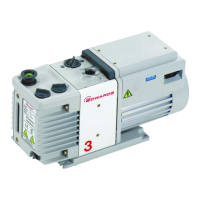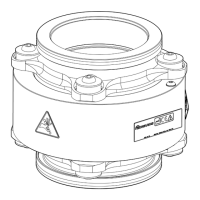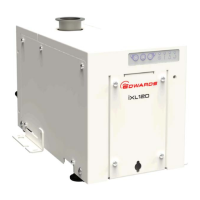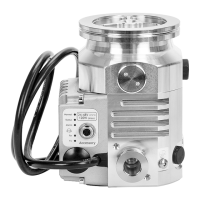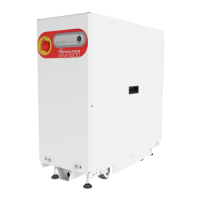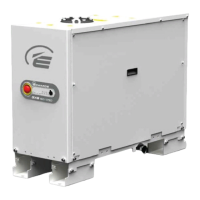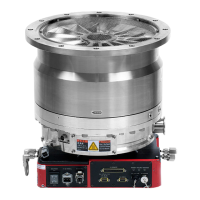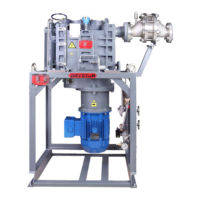© Edwards Limited 2013. All rights reserved. Page 51
Edwards and the Edwards logo are trademarks of Edwards Limited.
Maintenance
A708-01-880 Issue E
5.5.2 Drain the coolant and refill the pump with a different coolant
Note: A routine maintenance kit (see Section 7.3) will be required to drain and refill the pump with a different
coolant.
If refilling the pump with a different coolant, use the following procedure. The coolant used must comply with the
requirements of Section 2.10.
1. Refer to Figure 7. Place a suitable container under the coolant drain plug (detail A, item 1) to contain the
drained coolant. Alternatively, provide some other suitable facility for draining the coolant. The container/drain
facility must be capable of handling 50 l (13.2 US gal) of drained coolant.
2. Remove the drain plug from the pump and allow the coolant to drain from the cooling jacket.
3. Flush the cooling-jacket with clean water (through the heat exchanger filler tube) to remove any sludge or
debris from the cooling-jacket.
4. Apply a suitable thread sealant (such as Loctite
®
577) to the threads of the coolant drain plug (1), then refit the
drain plug to the pump.
5. Mix the coolant with water as recommended by the coolant manufacturer.
6. Fill the pump with new coolant through the heat exchanger filler tube (5): use the procedure in Step 6 of
Section 3.4.
7. Continue to fill the pump with coolant until the coolant level reaches the heat exchanger filler tube (5).
8. Refit the coolant filler cap (6); press it down and turn it clockwise to secure it to the heat exchanger.
9. Check the pump for obvious signs of a coolant leak. If there are signs of a coolant leak, contact the supplier or
Edwards for advice.
5.6 Remove the inlet filter (if necessary)
If the inlet filter was left in the pump inlet during installation (refer to Section 3.15.1), remove the inlet filter after
the pump has been in operation for one month. If not, the performance of the pump will be impaired.
Use the following procedure to remove the inlet filter
1. Disconnect the pump inlet from the process system.
2. Refer to Figure 1, 2 and 3. Remove the inlet filter from the pump inlet (6).
3. Reconnect the pump inlet to the process system.
5.7 Inspect the pipelines and connections
1. Inspect all of the cooling-system pipelines and connections; check that they are not corroded or damaged.
Replace any of the pipelines and connections that are corroded or damaged. Check that all of the cooling-system
connections are secure. Tighten any loose connections.
2. Inspect all of the shaft-seals purge gas supply pipelines and connections; check that they are not corroded or
damaged. Replace any pipelines and connections that are corroded or damaged. Check that all of the gas supply
connections are secure. Tighten any loose connections.
3. Inspect all of the oil pipelines and connections; check that they are not corroded or damaged. Replace any of
the pipelines and connections that are corroded or damaged. Check that all of the oil pipeline connections are
secure. Tighten any loose connections.
4. Inspect all of the gearbox and end cover vent pipelines and connections; check that they are not corroded or
damaged. Replace any of the pipelines and connections that are corroded or damaged. Check that all of the vent
pipeline connections are secure. Tighten any loose connections.
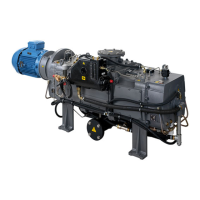
